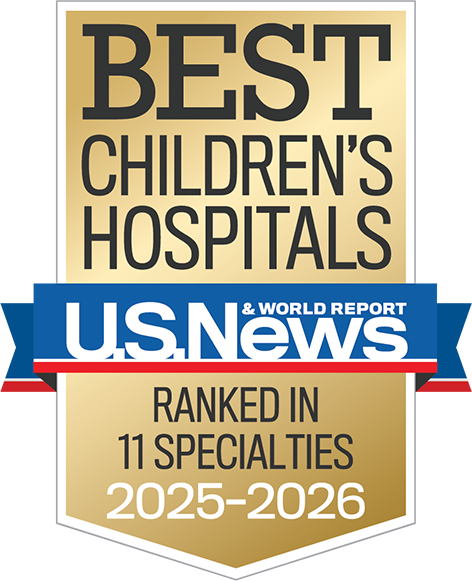The Eosinophilic Gastrointestinal Disorders Program (EGID) Program is a multidisciplinary program where a team of allergists, gastroenterologists and dietitians work together with patients and families to provide collaborative and comprehensive care for patients with eosinophilic esophagitis (EoE) and other EGIDs.
What is EoE?
Eosinophilic esophagitis (EoE) is a chronic allergic disease of the esophagus in which eosinophils, an allergy white blood cell, cause inflammation. EoE is most often caused by food proteins, but environmental allergies may also play a role. EoE is more common in children who have other allergy conditions, such as eczema, asthma or allergic rhinitis.
Symptoms (vary by age and may include):
- Infants and toddlers: vomiting, poor weight gain, feeding difficulties
- School-aged children: reflux/vomiting, abdominal pain, dysphagia (trouble swallowing), food/foreign body impaction (food or other items getting stuck)
- Adolescents and adults: dysphagia, food impaction
Untreated, EoE can lead to complications like scarring and narrowing of the esophagus.
Diagnosis
To diagnose EoE or other EGIDs, an endoscopy is performed. This is a procedure in which a small camera is inserted through the mouth, into the esophagus, stomach and part of the small intestine while a patient is under anesthesia. Small samples, called biopsies, are taken and sent to the lab where a pathologist can examine the samples under a microscope to look for eosinophils. If a child has more than 15 eosinophils on a microscope slide field, EoE is diagnosed. Numbers vary for other EGID conditions.
Treatment
- Food/dietary elimination – common triggers for EoE can be removed from the diet to see if symptoms improve or resolve
- Medications – common medications used for the treatment of EoE include proton pump inhibitors (PPIs), which are acid blocking medications, topical steroid medications, or weekly injectable biologic medications
- Some patients may require dilation of the esophagus, if the esophagus is so narrow that food gets stuck
What to Expect
Initial visit: The patient and his/her family are seen by an allergist and gastroenterologist. The physician team may also include pediatric resident physicians, and an allergy or gastroenterology fellow in training. If an elimination diet is chosen as a treatment plan, the family will also meet with a dietitian.
After the first visit, a patient is typically seen every 3-4 months depending on his/her symptoms and treatment plan. Once an effective treatment is found, visits may become yearly.
How make an appointment
Most patients are referred by a gastroenterologist or allergist. Contact your pediatrician for more information.
Related Programs & Services
We offer world-class care to children thanks in part to generous gifts from hundreds of people who have joined us in making health care better for all children. This philanthropic support enables us to fulfill our mission to do what's right for kids.











